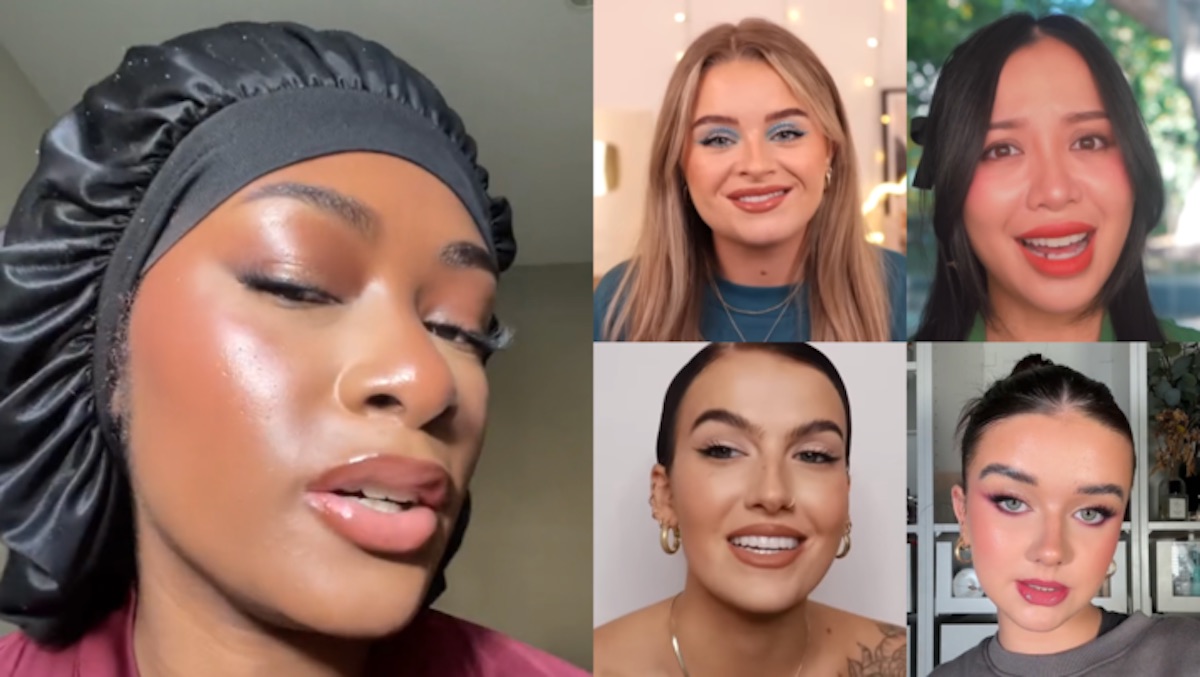Get Ready With Me To Explore Why We Love GRWM’s
Hey everyone, welcome back to my channel!

Get ready with me’s are a tale as old as time. They are an antique of social media, and yet they are still here.
Makeup tutorials have been a thing since beauty enthusiasts like Michelle Phan started uploading videos to YouTube in the late 2000s. In her very first video, she showed us how to do a natural makeup look. Since then, the internet’s beauty industry has boomed massively.
The first record, however, of someone using the term “Get Ready With Me” seems to be when Shannxo uploaded a video in 2011, where subscribers watched her get her glam on for a night out. From there, the term began popular and was used by people such as Zoella (a.k.a Zoe Sugg) and Tanya Burr. These videos became such a stable with makeup lovers that celebrities such as Kylie Jenner and her sister Kendall have made them, and Vogue has a series called Beauty Secrets where some of our faves like Doja Cat and Naomi Campbell have shown us how they do their skincare and makeup in their bathrooms.
Then, at some point, when the beauty industry’s PR realized that there was money to be made through these platforms, the influencer was born.
Despite YouTube now being somewhat at death’s door, at least for Gen-Z, Influencer Marketing Hub says that it’s still the platform with most beauty gurus making content. TikTok, however, has more reach. You would think that this would mean that those who make beauty content would move platforms, but many, in the case of this research anyway, seem to be happy operating across Instagram and YouTube.
TikTok’s reach might be to do with how short videos on the platform are. Experts who look at how social media affects us say largely that it’s not good, giving it the very imaginative name of ‘TikTok Brain’.
In 2020, Forbes published an article titled ‘Digital Crack Cocaine’ in which they spoke to Dr. Julie Albright, and what she had to say about the fast-growing rate of the app was … not the best?
“When you’re scrolling … sometimes you see a photo or something that’s delightful and it catches your attention, and you get that little dopamine hit in the brain … in the pleasure center of the brain. So you want to keep scrolling.”
She continued by saying that we are addicted to our phones, in a way not dissimilar from a gambling addiction.
“In psychological terms [it’s] called random reinforcement,” Albright said. “It means sometimes you win, sometimes you lose. And that’s how these platforms are designed … they’re exactly like a slot machine. Well, the one thing we know is slot machines are addictive. We know there’s a gambling addiction, right? But we don’t often talk about how our devices and these platforms and these apps do have these same addictive qualities baked into them.
“Our brains are changing based on this interaction with digital technologies and one of these is time compression,” Albright continued. “Our attention spans are lowering.”
But YouTube might be saved (along with our brain cells) as the clock app (as termed by users who have a love-hate relationship with it and those who use Twitter—that one’s a story for a different day) is introducing 20-minute videos. The hook? You have to pay for them. At present, users can watch or make videos that range from 15 seconds to 10 minutes, but if YouTube is a platform not used by the younger generation, would they really be that interested in 20-minute videos, especially when they’re not free? I say no.
Personally, I watch more TikTok than YouTube, but I will never forget my roots. I’ve loved these videos since Zoe and Tanya were doing weekly looks, from natural to full-on glam, and still enjoy them now. I watch the odd influencer on YouTube, like Sophie Floyd and SophDoesLife. But if anything, TikTok has made me love GRWMs more.
I follow hundreds of beauty content creators and find watching them therapeutic. I like getting to know these strangers, even if it’s on a base level. I feel like I’m on Facetime with them. Some of my current favorites are JosiePeaches, MillieMacMakeup, and ytnashaatbello. They all have the same thing in common: they are chill.
Apparently, though, it’s not all doom and gloom for our brains, as there is, in fact, research that suggests that watching videos made on TikTok can be positive. In an article by the Evening Standard, they mention findings by Audley Villages, which found that in the early days of the pandemic, TikTok was the most-done activity and physiologists said that it was positive.
Professor Sarah Coyn said that it was good for connection, especially as we couldn’t leave our homes, and that it wasn’t about how much we used it, but how we used it.
“Connection is extremely important during the pandemic, and social media is becoming a major way to reach out to others.”
Despite the time capsule that is YouTube, and our brains being destroyed by TikTok, I will watch Get Ready With Me’s wherever they go until the format dies—and I really, really hope it doesn’t.
(featured image (left to right): ytnashaatbello, SophDoesLife, Michelle Phan, MillieMacMakeup, Sophie Floyd)
Have a tip we should know? [email protected]
